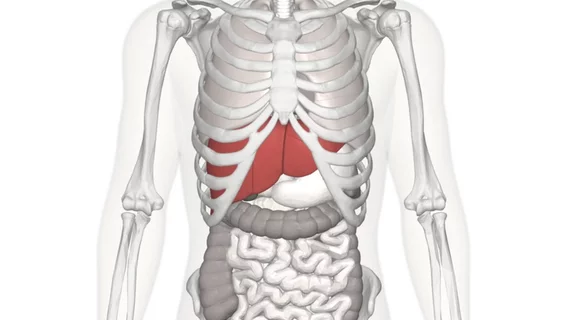Time-harmonic elastography assesses liver disease without need for invasive biopsy
New technology known as “time-harmonic elastography” allows physicians to assess the severity of liver disease without resorting to invasive biopsies, a team from Charité-Universitätsmedizin Berlin in Germany announced in a Radiology study this week.
“Time-harmonic elastography (THE) is a new, ultrasound-based technology used to measure liver fibrosis,” Christian Hudert, MD, lead author of the study and a pediatric gastroenterologist at Charité’s Center for Chronically Sick Children, said in a release. “It works without the need for invasive liver biopsies.”
Hudert and his colleagues said THE could be a development critical to the timely assessment of liver disease in adolescents—especially obese ones. Conventional procedure involves analyzing liver tissue taken during a biopsy, they said, but it can be difficult to obtain tissue samples at greater depths, as is often the case in overweight patients.
THE opens the door for deeper tissue assessment, the authors said, and, using elastography, the method measures liver stiffness as a marker for disease. Though liver disease can persist for years without any substantial impairment, disease progress will eventually lead to fibrosis or cirrhosis, both of which are indicated by stiff organs.
The researchers tested time-harmonic elastography in a group of 67 adolescents with nonalcoholic fatty liver disease, using measurements of liver stiffness as indicators of fibrosis. Patients laid on a trolley that rolled out vibrational waves—“not unlike those produced by a massage chair,” according to the release—and those waves were measured inside the liver tissue using ultrasound technology.
“The THE technology was shown to be capable of accurately distinguishing between patients with no fibrosis or mild fibrosis and patients with moderate or advanced fibrosis,” Hudert said.
The authors wrote in Radiology that larger clinical trials on the subject are warranted to confirm the study’s findings.
“We demonstrated the feasibility and diagnostic accuracy of time-harmonic elastography in detecting and staging hepatic fibrosis in adolescents with biopsy-proven nonalcoholic fatty liver disease,” they said. “Our results show that time-harmonic waves allow for deep mechanical stimulations of the abdominal region including the full liver for precise liver stiffness measurements, even in patients with extreme obesity.”

